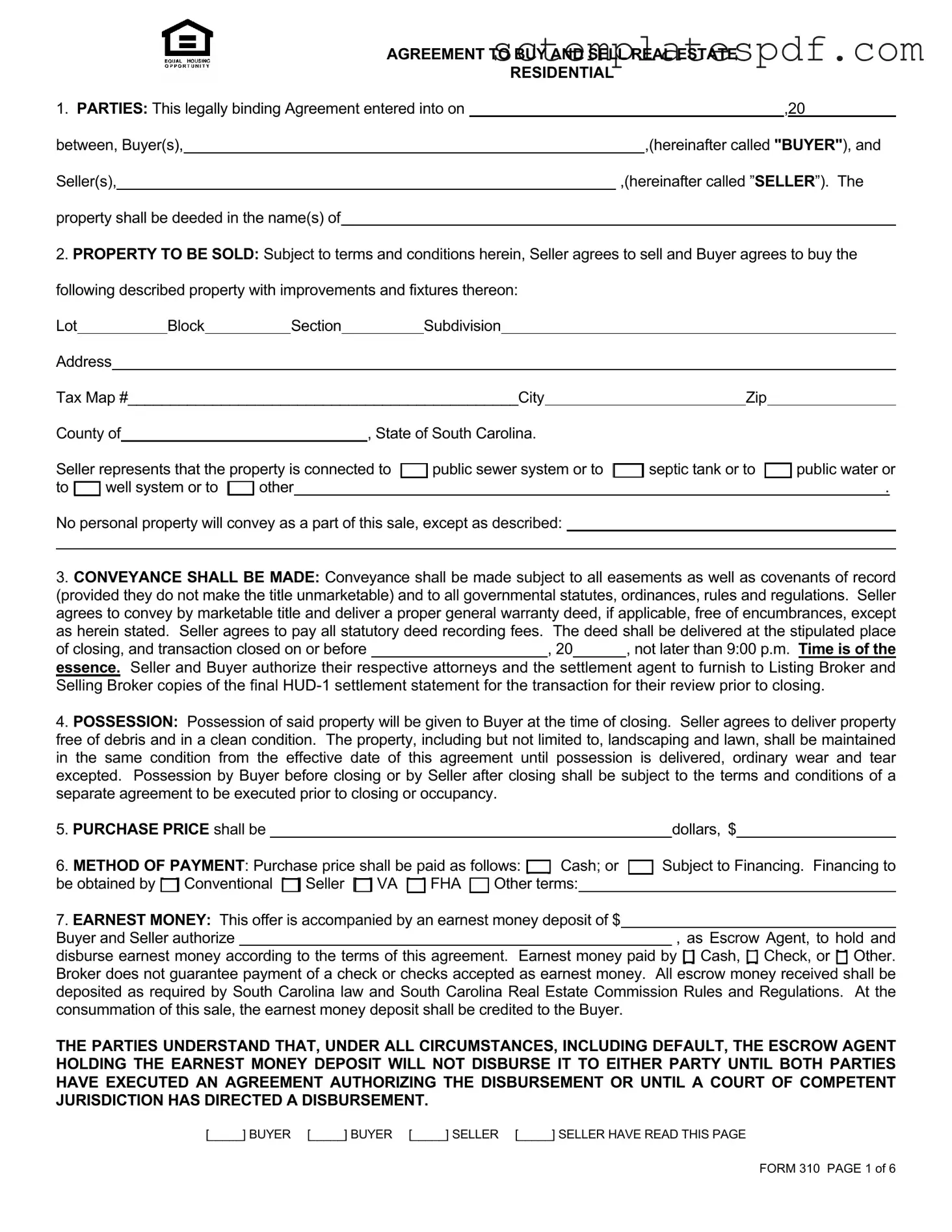South Carolina Real Estate Contract 310 Template
The South Carolina Real Estate Contract 310 form is a legally binding agreement used in residential real estate transactions in South Carolina. This form outlines the terms and conditions under which a buyer agrees to purchase property from a seller, including details about the property, purchase price, and closing procedures. Understanding this form is crucial for both buyers and sellers to ensure a smooth transaction process.
Ready to fill out the South Carolina Real Estate Contract 310 form? Click the button below to get started!
Fill Out Your South Carolina Real Estate Contract 310
